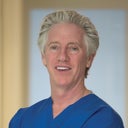Posted underEyelid Retraction Repair q&a
Is a hard palate graft the right procedure for lower lid retraction caused by scar tissue? (photo)
A surgeon said a graft from my hard palate would be the last option to have this issue fixed. I've gone through all the simple fixes. My lid pulls down when I open my mouth. This is what bothers me. It shows up in photos, my eye gets really red and I'm constantly trying to not open my mouth for fear that my eyelid will pull down. Will the graft procedure correct this? (If the operation goes well) Or is this just a procedure to fix the scleral show when my face is at rest?
Answers (5)
From board-certified doctors and trusted medical professionals

Dr. Kenneth D. Steinsapir, MD
Oculoplastic Surgeon, Board Certified in Ophthalmology
Answer

Dr. John J. Martin, Jr., MD
Oculoplastic Surgeon, Board Certified in Ophthalmology
Answer
Dr. Matheson A. Harris, MD
Oculoplastic Surgeon, Board Certified in Ophthalmology
Answer
More Eyelid Retraction Repair Questions
See all Eyelid Retraction Repair Q&AWE SEND PRETTY
EMAILS
What’s trending? Who’s turning heads? Which TikTok myths need busting? We’ve got you. No fluff, no gatekeeping—just real talk. Get our free, unfiltered newsletter.


